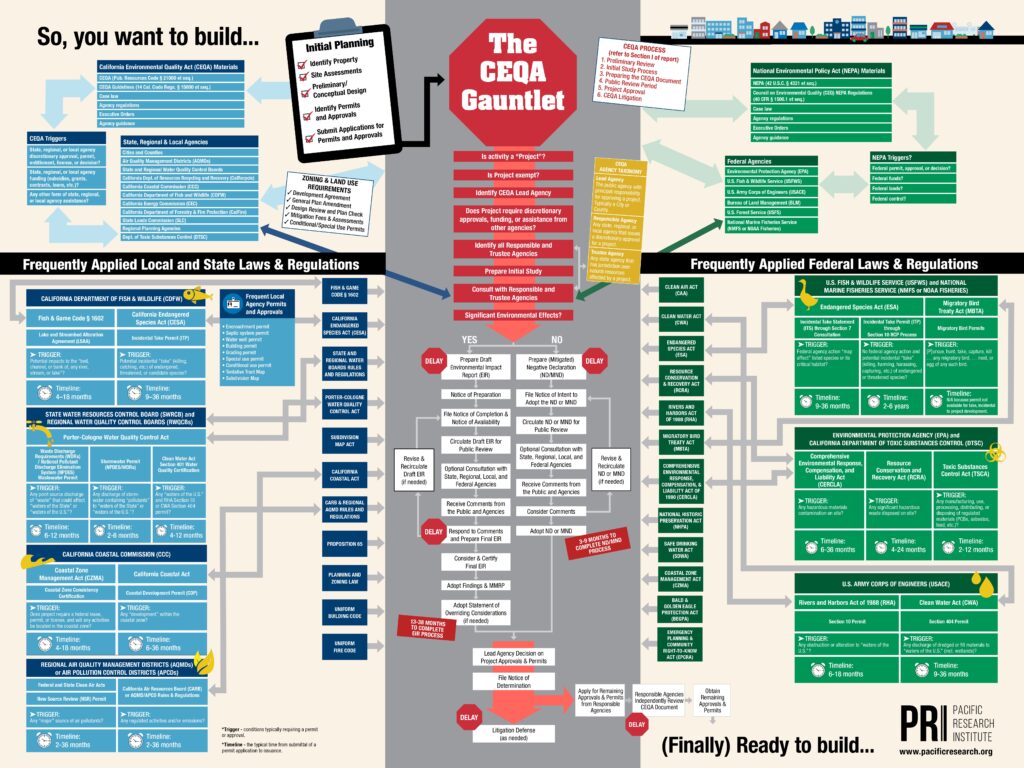The broken clock that has been state government’s response to the Southern California wildfires was right once on Sunday when Gov. Gavin Newsom signed an executive order waving numerous environmental requirements that threatened to add unnecessary delay and expense to the rebuilding process.
Under the Newsom executive order, California Environmental Quality Act (CEQA) review requirements and California Coastal Commission permits were waived for projects that “repair, restore, demolish, or replace property or facilities substantially damaged or destroyed” by the wildfires.
Newsom did the right thing here, but victims of other recent wildfires, such as the Camp Fire that destroyed Paradise in the North State, are wondering why they weren’t afforded the same regulatory relief.
“What about the fires that have devastated CA for decades?” tweeted Central Valley Assemblyman David Tangipa. “Families are still rebuilding from the Creek Fire . . . We’ve begged for streamlined permits & prevention.”
Tangipa is right – victims of all wildfires should receive the same regulatory relief, so they don’t become victims a second time at the hands of state government bureaucrats.
In the newly-expanded special session, Newsom and Sacramento Democrats should consider legislation to make CEQA relief for wildfire rebuilding permanent for all Californians.
They should also take the next step and extend CEQA relief for wildfire prevention efforts across the state, so they don’t face a painful rebuilding and recovery process in the first place.
PRI’s research has shown that the need to reform CEQA for wildfire-related efforts is without question. As Chris Carr, Navi Dhillon, and Lucas Grunbaum write in PRI’s eye-opening research project “The CEQA Gauntlet”:
California enacted CEQA with the seemingly straightforward goal of incorporating environmental considerations into the public decision-making process . . . (However) the law has stymied the building of sorely needed housing . . . (and) efforts to reduce California’s wildfire risk . . . CEQA has ironically set back the State’s efforts to protect the environment.
The chart below illustrates the CEQA gauntlet that wildfire-related projects and nearly all building projects in California must go through.

We documented a wildfire risk reduction project in San Diego County that was held up for over 8 years, despite receiving a federal grant, thanks to nuisance lawsuits filed under CEQA.
To their credit, Newsom and lawmakers have made some strides in reducing environmental bureaucracy for infrastructure and climate change projects, but they haven’t been very successful.
Consider a 2022 investigation by Capitol Public Radio and The California Newsroom which found at the time of publication that a Newsom initiative to fast-track environmental reviews for Northern California wildfire prevention projects, the California Vegetation Treatment Program, “hadn’t led to the completion of a single project (at the time of publication) . . . in stark contrast to projections by the state . . . which anticipated CalVTP would lead to 45,000 acres of completed work in its first year.”
The problem is that reforms typically enacted by the Legislature are typically temporary and limited to a specific disaster or are minor changes that won’t arouse the ire of their environmentalist supporters.
Newsom should also use his executive pen more often.
As PRI board member Dan Kolkey writes in the book Saving California, Newsom “is authorized to declare a state of emergency based on conditions of ‘extreme peril to the safety of persons and property,’ such as fire or drought.”
“During a state of emergency, the governor may suspend any regulatory statute . . . in order to expedite protective measures,” he argues.
Just as he acted to help the current wildfire victims, he can take the extreme ongoing risk that the state faces from wildfires to waive regulations and eliminate the types of roadblocks described above.
The ferocity of the current round of Southern California wildfires, coming on the heels of so many destructive fires in Northern and Central California, shows it is imperative for lawmakers to enact permanent and more expansive CEQA relief to reduce wildfire risk, limit the severity of emissions-spewing future fires that hurt our climate, and ensure no other Californian has to go through what our Southern California neighbors are experiencing this week.
Tim Anaya is the Pacific Research Institute’s vice president of marketing and communications and co-author of The California Left Coast Survivor’s Guide.

